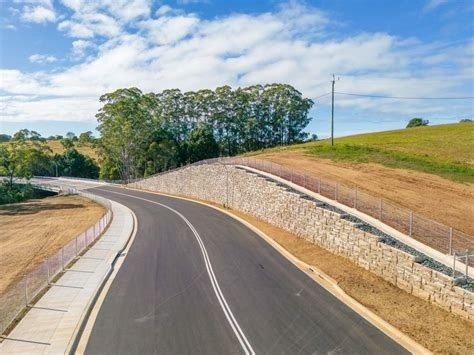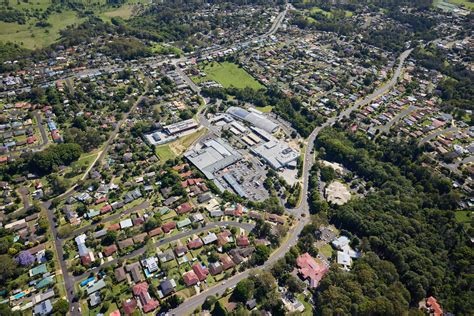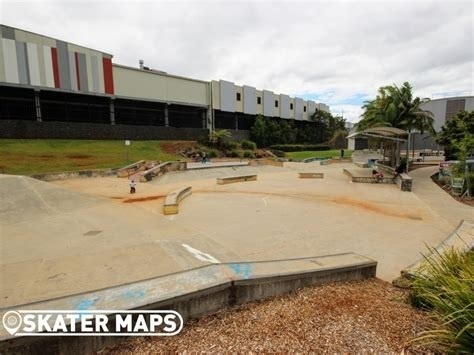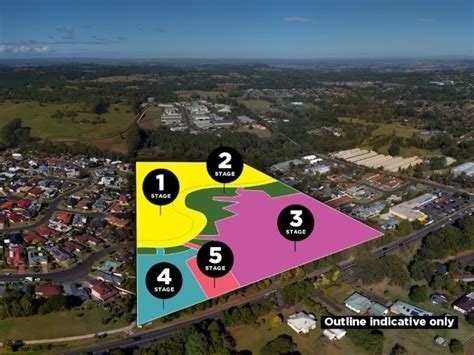Chart Color Schemes
est. as @ -- *
ABS ERP | -- people | --
2021 Census | -- people
Sales Activity
Curious about local property values? Filter the chart to assess the volume and appreciation (including resales) trends and regional comparisons, or scroll to the map below view this information at an individual property level.
Find a Recent Sale
Sales Detail
Population
An assessment of population growth drivers in Goonellabah reveals an overall ranking slightly below national averages considering recent, and medium term trends
Goonellabah's population, as of August 2025, is approximately 14,032. This figure reflects a growth of 441 people since the 2021 Census, which recorded a population of 13,591. The increase is inferred from ABS estimates and new address validations between June 2024 and the Census date. This results in a density ratio of 556 persons per square kilometer. Goonellabah's growth rate of 3.2% since the 2021 Census exceeds the SA3 area's growth rate of 0.2%. Overseas migration contributed approximately 43.8% to this population gain, although all drivers were positive factors.
AreaSearch uses ABS/Geoscience Australia projections for each SA2 area, released in 2024 with a base year of 2022. For areas not covered by these data, NSW State Government's SA2 level projections are utilized, released in 2022 with a base year of 2021. Growth rates by age group are applied to all areas for years 2032 to 2041. Based on projected demographic shifts, Goonellabah is expected to expand by approximately 928 persons to 2041, reflecting an increase of around 6.6% over the 17-year period.
Frequently Asked Questions - Population
Development
Recent residential development output has been above average within Goonellabah when compared nationally
Goonellabah recorded approximately 101 residential properties granted approval annually. Development approval data is produced by the Australian Bureau of Statistics on a financial year basis, with 508 dwellings approved over the past five financial years between FY-20 and FY-25, including five approvals so far in FY-26. On average, around 1.4 new residents arrive per new home annually over these five years, suggesting balanced supply and demand dynamics. The average expected construction cost value of new dwellings is $412,000, aligning with broader regional development trends.
This financial year has seen $5.8 million in commercial approvals, indicating limited focus on commercial development. Compared to the Rest of NSW, Goonellabah exhibits 93.0% higher building activity per person, offering buyers greater choice, though construction activity has recently eased. Recent construction comprises 80.0% detached houses and 20.0% medium and high-density housing, maintaining the area's traditional low density character with a focus on family homes appealing to those seeking space. The location has approximately 250 people per dwelling approval, indicating a low density market.
Population forecasts project Goonellabah gaining 921 residents through to 2041. Based on current development patterns, new housing supply should readily meet demand, offering good conditions for buyers and potentially facilitating population growth beyond current projections.
Frequently Asked Questions - Development
Infrastructure
Goonellabah has emerging levels of nearby infrastructure activity, ranking in the 31stth percentile nationally
The performance of an area is significantly influenced by changes in local infrastructure, major projects, and planning initiatives. AreaSearch has identified a total of 21 projects that are expected to impact the area. Notable projects include Platypus Park Residential Development, Invercauld Road Subdivision at 226 Invercauld Road, Goonellabah Urban Release Area at 1055 Bruxner Highway, and Points North Estate. The following list details those projects that are likely to be most relevant.
Professional plan users can use the search below to filter and access additional projects.
INFRASTRUCTURE SEARCH
Frequently Asked Questions - Infrastructure
Lismore Employment Lands Project
Major infrastructure project extending Oliver Avenue to link with the Bruxner Highway, including a new 20-meter bridge over Tucki Tucki Creek, roundabouts, and earthworks to unlock flood-free industrial land in the Goonellabah Industrial Estate for investment and job creation. Project opened July 2023.

Goonellabah Urban Release Area - 1055 Bruxner Highway
A 60 hectare mixed-use development on the fringe of Goonellabah, expected to deliver over 400 dwellings and 100 commercial/industrial lots. Rezoning approved by the NSW Department of Planning on 11 July 2025, with site-specific DCP adopted in April 2025. Next steps include infrastructure delivery and preparation of Development Applications.

Bruxner Highway Upgrade - Wollongbar to Goonellabah
The project involves identifying and preserving a preferred corridor for an upgrade of approximately eight kilometres of the Bruxner Highway between Sneaths Road, Wollongbar, and Kadina Street, Goonellabah. The upgrade aims to improve safety, efficiency, and resilience, supporting population and economic growth in the region. Key features include a dual carriageway with no at-grade intersections from Sneaths Road to Oliver Avenue, connection to the Alstonville Bypass, compliance with current safety standards, support for B-double vehicles, and opportunities for shared pathways.

Service NSW Customer Service Centre Relocation
Relocation of Service NSW to a new $2.56 million purpose-built facility in The Village Shopping Centre, Goonellabah. The new centre will provide driver testing and the full suite of government services and transactions. Features include 16 dedicated parking spaces (2 PWD spaces), entrance facing Simeoni Drive, and modern accessibility facilities. The facility will replace the temporary Molesworth Street location.

Goonellabah Affordable Housing Project - Bristol Circuit & Cynthia Wilson Drive
Delivery of 56 affordable rental homes across two Goonellabah sites: 16 townhouses at 44 Bristol Circuit (DA lodged and on public exhibition) and 40 townhouses at 69 Cynthia Wilson Drive (DA to follow). Partnership between Landcom and Lismore City Council, with a community housing provider to be appointed. Supported by Homes NSW and the NSW Reconstruction Authority under the Resilient Lands Program.

Goonellabah Skate Park Upgrade
Comprehensive upgrade to the skate park incorporating new skate elements designed by Trinity Skateparks including new ramps, pier 7 ledge, manual pad, loading dock and hydrant, flat rail, and slappy kerb. Includes drainage improvements, floor repairs and fresh paint to enhance the facility for all ages and abilities.

Platypus Park Residential Development
A sustainable 12.22 hectare residential development featuring 92 approved lots with average size of 844 sqm. The development includes extensive civil works, underground power, NBN connections, restoration of Tucki Tucki Creek, walking tracks, platypus viewing stations, and parks. Lots range from 524m2 to 1605m2 with prices starting from $395,000.

Mount Pleasant Estate Resilient Lands Program
NSW Reconstruction Authority subdivision in Goonellabah delivering up to 39 new flood-resilient housing lots and a demonstration mix of relocated character homes and new builds. Four buyback homes were relocated to the site in late 2024 and are undergoing renovation during 2025 ahead of occupation. Enabling works commenced 2024; further staged releases to follow.

Employment
Despite maintaining a low unemployment rate of 3.5%, Goonellabah has experienced recent job losses, resulting in a below average employment performance ranking when compared nationally
Goonellabah has a skilled workforce with essential services sectors well represented. Its unemployment rate is 3.5%.
As of June 2025, there are 6,284 residents employed, with an unemployment rate of 0.2% below Rest of NSW's rate of 3.7%. Workforce participation in Goonellabah is similar to Rest of NSW's 56.4%. The dominant employment sectors among residents include health care & social assistance, retail trade, and education & training. Goonellabah has a particular specialization in health care & social assistance, with an employment share of 1.4 times the regional level, while agriculture, forestry & fishing employs only 2.7% of local workers, below Rest of NSW's 5.3%.
There appears to be limited local employment opportunities, as indicated by Census data comparing working population and resident population. Over the year to June 2025, labour force levels decreased by 4.8%, while employment declined by 3.6%, causing unemployment to fall by 1.1 percentage points. In contrast, Rest of NSW experienced a slight employment decline of 0.1% and labour force growth of 0.3%. State-level data for NSW up to Sep-25 shows employment contracted by 0.41%, with an unemployment rate of 4.3%. This compares favourably to the national unemployment rate of 4.5%, but lags behind national employment growth of 0.26%. Jobs and Skills Australia's national employment forecasts from May 2025 suggest that while national employment is expected to expand by 6.6% over five years and 13.7% over ten years, growth rates differ significantly between industry sectors. Applying these projections to Goonellabah's employment mix suggests local growth of approximately 6.7% over five years and 14.2% over ten years.
Frequently Asked Questions - Employment
Income
Income figures position the area below 75% of locations analysed nationally by AreaSearch
Goonellabah's median taxpayer income was $46,374 and average was $59,358 in financial year 2022. This is lower than the national average of $49,459 and $62,998 respectively for Rest of NSW. By March 2025, estimates suggest median income could reach approximately $51,290 and average around $65,650, based on a 10.6% increase in wages since financial year 2022. Incomes in Goonellabah ranked between the 22nd to 30th percentiles for households, families, and individuals according to the 2021 Census. The majority of residents (4,406) earned $1,500-$2,999 weekly, comprising 31.4% of the population, similar to surrounding regions at 29.9%. Housing affordability is severe with only 83.8% of income remaining after expenses, ranking at the 23rd percentile.
Frequently Asked Questions - Income
Housing
Goonellabah is characterized by a predominantly suburban housing profile, with a higher proportion of rental properties than the broader region
Dwelling structure in Goonellabah, as evaluated at the latest Census held on 28 August 2016, comprised 78.0% houses and 21.9% other dwellings such as semi-detached units, apartments, and 'other' dwellings. In comparison, Non-Metro NSW had 86.8% houses and 13.2% other dwellings. Home ownership in Goonellabah stood at 37.3%, with the remaining dwellings either mortgaged (33.2%) or rented (29.6%). The median monthly mortgage repayment in Goonellabah was $1,560, higher than Non-Metro NSW's average of $1,452. Meanwhile, the median weekly rent figure for Goonellabah was recorded at $320, compared to Non-Metro NSW's $300. Nationally, Goonellabah's mortgage repayments were significantly lower than the Australian average of $1,863, while rents were substantially below the national figure of $375.
Frequently Asked Questions - Housing
Household Composition
Goonellabah features high concentrations of lone person households, with a fairly typical median household size
Family households account for 65.5% of all households, including 24.4% couples with children, 25.7% couples without children, and 14.2% single parent families. Non-family households comprise the remaining 34.5%, with lone person households at 31.0% and group households making up 3.6% of the total. The median household size is 2.4 people, which matches the average for the Rest of NSW.
Frequently Asked Questions - Households
Local Schools & Education
Educational outcomes in Goonellabah fall within the lower quartile nationally, indicating opportunities for improvement in qualification attainment
Goonellabah faces educational challenges, with university qualification rates at 21.3% compared to NSW's average of 32.2%. Bachelor degrees are the most common at 14.7%, followed by postgraduate qualifications (3.9%) and graduate diplomas (2.7%). Trade and technical skills are prominent, with 38.0% of residents aged 15+ holding vocational credentials – advanced diplomas (10.0%) and certificates (28.0%). Educational participation is high at 28.2%, including primary education (9.8%), secondary education (7.6%), and tertiary education (3.9%).
As of 2021, Goonellabah's four schools have a combined enrollment of 1,331 students, with an ICSEA score of 953 indicating typical Australian school conditions. The educational mix includes one primary school, one secondary school, and two K-12 schools. School places per 100 residents are lower than the regional average at 9.5, suggesting some students may attend schools in nearby areas.
Frequently Asked Questions - Education
Schools Detail
Nearby Services & Amenities
Transport
Transport servicing is moderate compared to other areas nationally based on assessment of service frequency, route connectivity and accessibility
Goonellabah has 304 active public transport stops, all of which are bus stops. These stops are served by 44 different routes that together facilitate 685 weekly passenger trips. The accessibility of these services is rated as excellent, with residents typically living just 111 meters from the nearest stop.
On average, there are 97 trips per day across all routes, which equates to approximately two trips per week for each individual stop.
Frequently Asked Questions - Transport
Transport Stops Detail
Health
Health performance in Goonellabah is well below average with prevalence of common health conditions notable across both younger and older age cohorts
Goonellabah faces significant health challenges, as indicated by its health data. Both younger and older age groups show high prevalence rates for common health conditions.
Private health cover is relatively low, at approximately 49% of the total population (~6,889 people), compared to the national average of 55.3%. Mental health issues and asthma are the most prevalent medical conditions in the area, affecting 11.1 and 9.9% of residents respectively. Conversely, 59.8% of residents claim to be free from any medical ailments, slightly lower than the Rest of NSW average of 61.9%. The population aged 65 and over stands at 21.9%, comprising around 3,074 people. Health outcomes among seniors largely mirror those of the general population.
Frequently Asked Questions - Health
Cultural Diversity
Goonellabah is considerably less culturally diverse than average when assessed alongside AreaSearch's national rankings for language and cultural background related metrics
Goonellabah, as per the 2016 Census, showed lower cultural diversity with 89.7% of its residents born in Australia, 91.4% being Australian citizens, and 93.6% speaking English only at home. Christianity was the predominant religion, practiced by 55.5% of Goonellabah's population. The category 'Other' was overrepresented compared to Rest of NSW, comprising 1.6% versus 1.1%.
Regarding ancestry, the top groups were Australian (30.1%), English (30.0%), and Irish (9.3%). Notable differences included Australian Aboriginal at 5.2% (versus 4.6% regionally), Scottish at 8.0% (versus 8.5%), and Italian at 3.2% (versus 2.6%).
Frequently Asked Questions - Diversity
Age
Goonellabah hosts an older demographic, ranking in the top quartile nationwide
Goonellabah's median age is 42 years, similar to Rest of NSW average at 43, but older than Australia's median age of 38. The age profile shows a prominent 0-4 year-old group at 6.8%, while the 65-74 group is smaller at 11.1% compared to Rest of NSW. Between 2021 and present, the 0-4 age group has grown from 5.8% to 6.8%. Conversely, the 55-64 cohort has decreased from 12.4% to 11.6%. By 2041, projections indicate significant demographic changes in Goonellabah. The 25-34 age group is expected to grow by 18%, adding 307 residents to reach 2,059. However, population declines are projected for the 65-74 and 55-64 cohorts.






